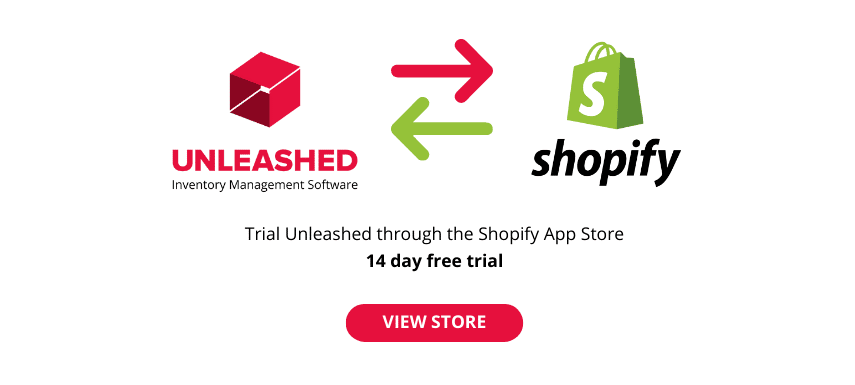
Many eCommerce businesses grow quickly. And as managers become busy focusing on increasing sales and expanding into new markets, their accounting becomes more complicated – and mistakes are made.
We asked two experts to identify the top three eCommerce accounting mistakes that businesses make – and most importantly, how to avoid and/or address each of these. Here’s what they said.
Introducing the experts
Philip Oakley is the managing director of UK cloud software firm Outserve – an Unleashed, Xero and Shopify partner. Outserve specialises in software for eCommerce and manufacturing businesses, including accounting, multi-channel selling and stock management solutions.
Jamie Shulman is a co-founder of document collaboration platform Hubdoc, and is head of accounting at Toronto-based A2X, which specialises in eCommerce accounting software designed to automate the reconciliation process and ensure eCommerce financials are accurate.
Mistake 1: Treating your eCommerce payouts as income
Philip: What we’re talking about here is, if you take the two main platforms (Amazon and Shopify) when you’re running your own eCommerce store, they pay out in bulk every 3–5 days. So you just get one big payout coming into your bank account.
For argument’s sake, Shopify pays out £3,000 and it hits the Xero or QuickBooks bank feed. We’ve seen businesses code that up to a sales code, give it a VAT status, and off it goes straight to the ledger.
Unfortunately, there’s a bit more complication to that, because Amazon or Shopify has paid out a net payment, and it could have to be adjusted for many different things: shipping fees, shipping income, and marketing spend. And all of this is just getting netted off.
So to treat that figure as all income could be incorrect. It soon gets complicated, and being able to see that breakdown and all the information is key.
There are many ways a client can go in the wrong direction, one being that they can focus on getting every sale into their general ledger. And there are a multitude of others.
-Jamie Shulman, A2X
Jamie: There’s all these layers of items that will have been taken off. It could be refunds; it could be returns; it could be tax; it could be fulfilment fees; it could be advertising; it could be loans.
At a high level, it’s that concept of focusing on the payout and the money as opposed to the sales transaction, which is what we would do with a traditional business – that's a key difference. It’s not particularly complicated, but it’s maybe counterintuitive – so there’s a real opportunity for accountants to give this advice to the merchant.
As soon as there’s a bit of complexity, or a certain level of size, most businesses would like to have an accountant handle it to make sure they get it right.
- For advisors: a 5 minute video overview of Unleashed
Mistake 2: Creating an invoice for every order
Philip: Businesses come to us with many different eCommerce platforms, and there’s a lot of integrations out there where as soon as an order is placed on their eCommerce store, it creates that as an invoice in Xero or QuickBooks.
When businesses are small, lots of little invoices are coming into the sales ledger, creating lots of customer accounts. But as soon as they start getting successful, they’ve got 20,000 customer accounts, and thousands of unreconciled ledger balances.
These eCommerce businesses have created a real headache by having to match bank feeds or Paypal feeds with lots of little invoices. We just don’t need that volume and all those micro-transactions in your accounting software.
It's a bit like being a café on the high street, and every time you sell a cup of coffee you put that transaction into your Xero. You don’t want that. You want a proper summary of the takings.
Are you an advisor or accountant?
Learn about Unleashed for advisors here Learn morePhilip: There’s an opportunity for the accountants who work with their clients to see this coming before it gets too bad. In extreme cases, we’ve seen people migrate off Xero and back in to Xero.
Jamie: Another example of an occurrence which can cause issues is these payouts often span a couple of weeks. Say they came on February 8th – it might include the last week of January and the first week of February. Although it would be tempting to put that as February sales, half of those sales came from the previous month.
That happens quite frequently. It starts to sound complicated, but it’s not for an accountant – but can be for an entrepreneur who has a hundred things to do.
Mistake 3: Lack of detail on cost of goods sold
Philip: With the clients we see, where we really want to get to with reporting is being able to run sensible management accounts, and even slice and dice the data.
A client might say: “I want to see profit and loss for January from the Amazon channel.” The perfect scenario is that you see profit and loss, the cost of goods sold (particularly matched to those sales) and any direct expenses as well – so understanding as sales are coming in what the cost of those sales is.
Traditionally, what clients have done is posted their purchases into the P&L, and they’re not able to attribute the cost of those sales to the income. This is an area where accountants and advisors can help, creating those management accounts that will give them the information to make good strategic decisions.
Seeing the margins clearly across different marketplaces, eCommerce stores, and countries, especially taking into account shipping, charges, warehousing costs, delivery costs – which we’ve seen significant increases in in the last couple of years – it's so important that they can get to that detail.
Most product-based businesses, they’ve got fantastic products, but this isn’t their area of expertise – to get to that level of good accounting data.
Jamie: The reality is that more automation is going to continue to emerge that will help accountants do this work more seamlessly, more accurately, and provide a better experience for clients.

